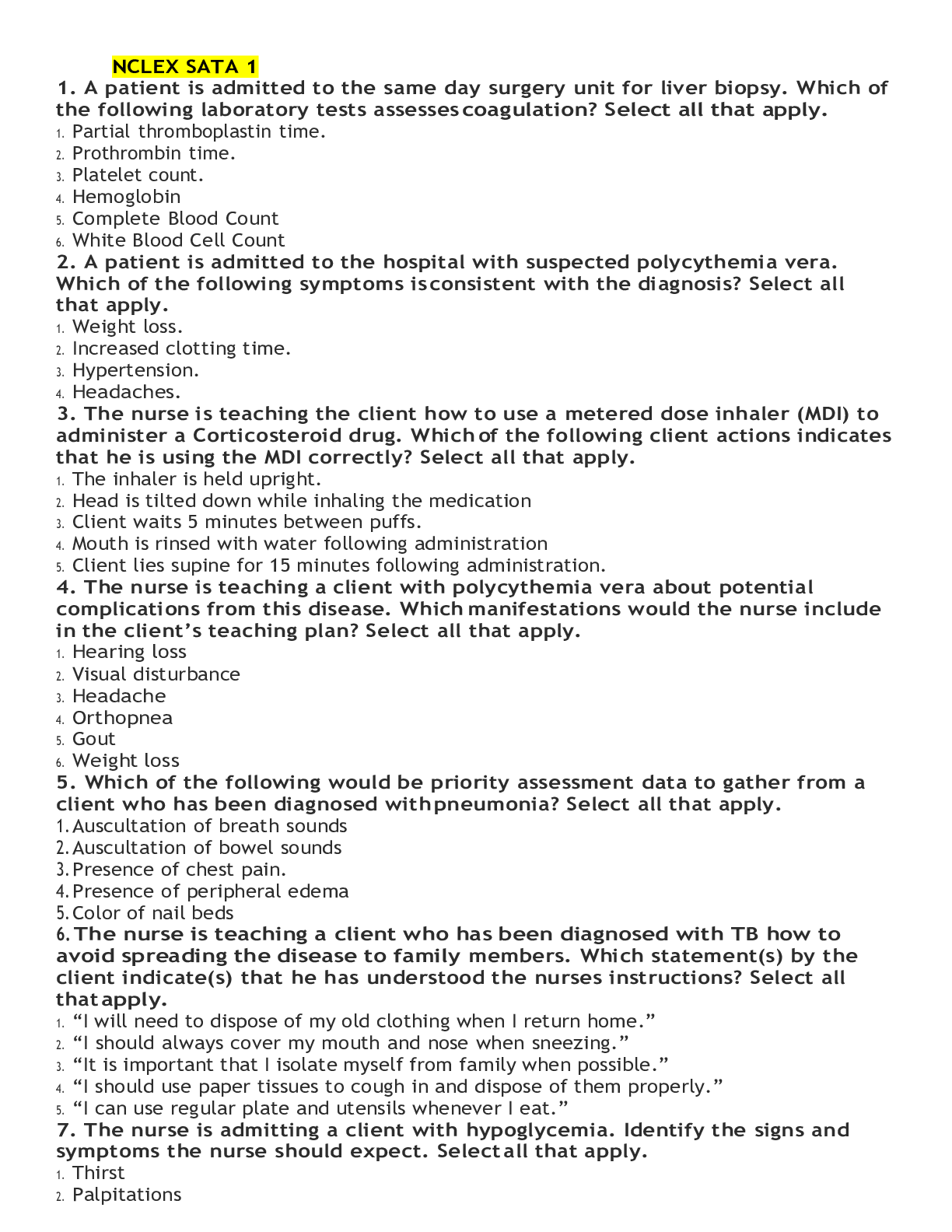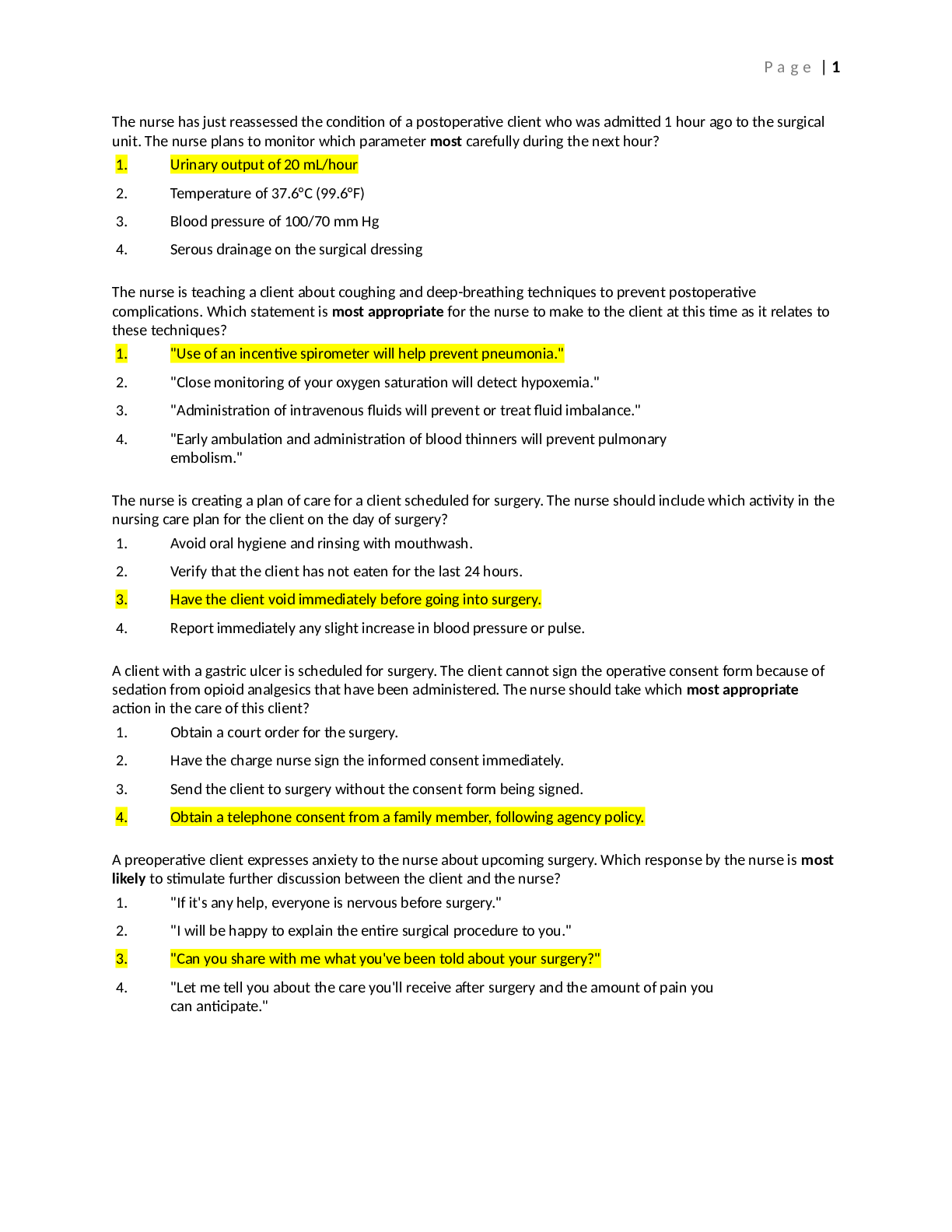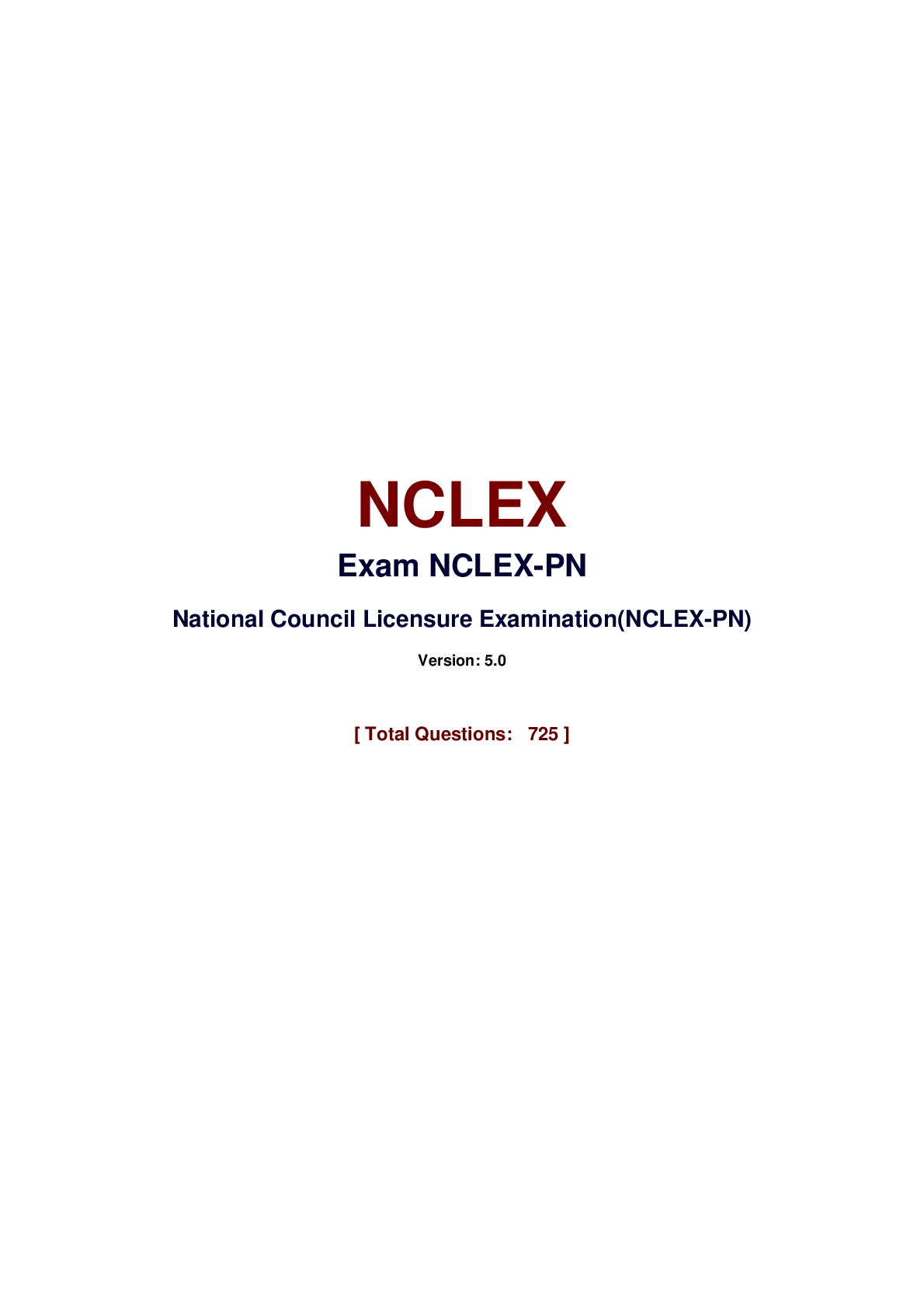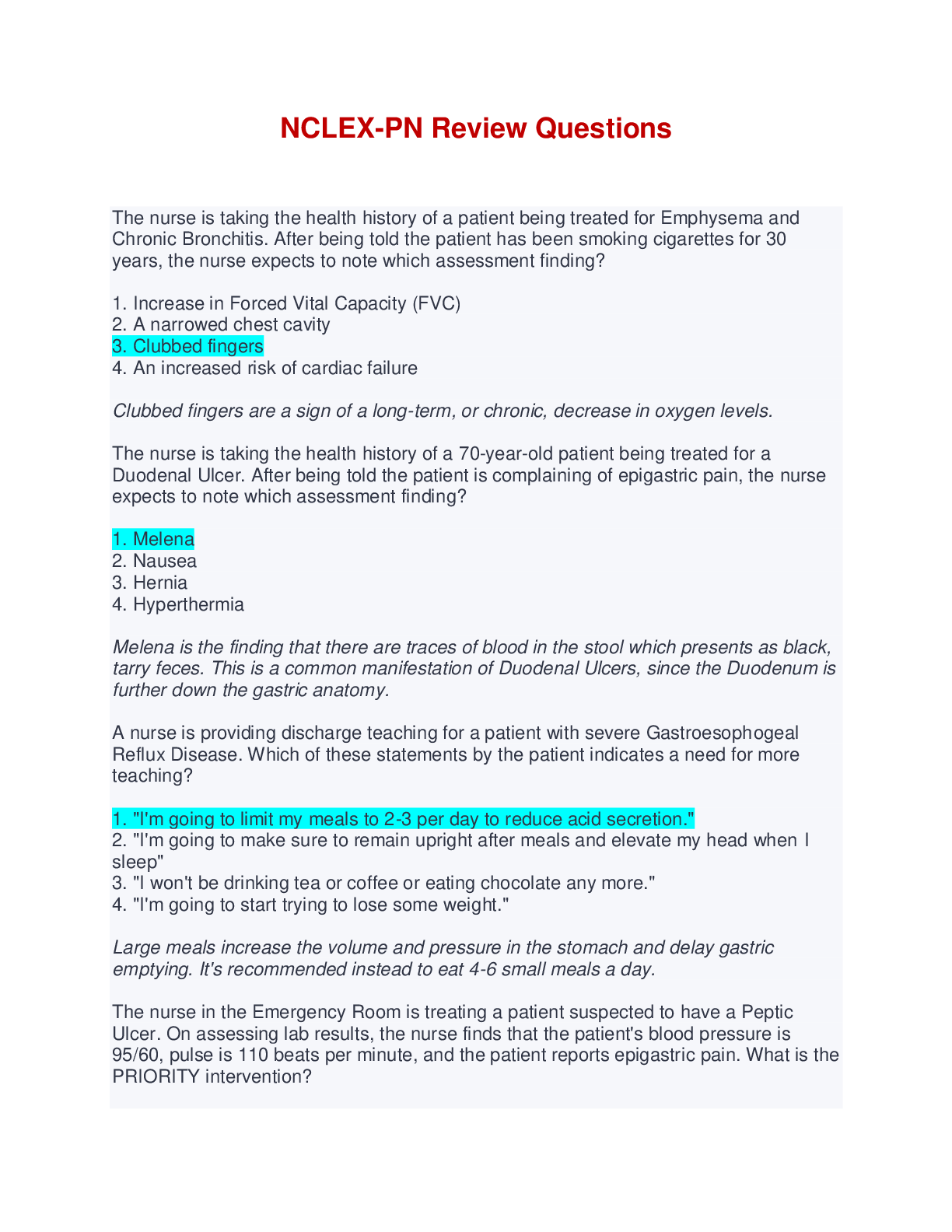Saunders NCLEX Questions - Cardiac (Answered with Rationales)
Document Content and Description Below
Saunders NCLEX Questions - Cardiac (Answered with Rationales) The nurse is watching the cardiac monitor and notices that the rhythm suddenly changes. No P waves or QRS complexes are seen; instead, t... he monitor screen shows an irregular wavy line. The nurse interprets that the client is experiencing which rhythm? Ventricular fibrillation Ventricular fibrillation is characterized by the absence of P waves and QRS complexes. The rhythm is instantly recognizable by the presence of coarse or fine fibrillatory waves on the cardiac monitoring screen. Sinus tachycardia has a recognizable P wave and QRS. Ventricular tachycardia is a regular pattern of wide QRS complexes. PVCs appear as irregular beats within a rhythm. Each of the incorrect options has a recognizable complex that appears on the monitoring screen. A client with myocardial infarction is experiencing new, multiform premature ventricular contractions (PVCs). Knowing that the client is allergic to lidocaine hydrochloride, the nurse plans to have which medication available for immediate use? ProcainamideProcainamide ProcainamideProcainamide is an antidysrhythmic that may be used to treat ventricular dysrhythmias in clients who are allergic to lidocaine. Digoxin is a cardiac glycoside; verapamil is a calcium-channel blocking agent; metoprolol is a β-adrenergic blocking agent. A client has received antidysrhythmic therapy for the treatment of premature ventricular contractions (PVCs). The nurse evaluates this therapy as most effective if the client's PVCs continued to exhibit which finding? Decrease to a frequency of less than 6 per minute PVCs are considered dangerous when they are frequent (more than 6 per minute), occur in pairs or couplets, are multifocal (multiform), or fall on the T wave. In each of these instances, the client's cardiac rhythm is likely to degenerate into ventricular tachycardia or ventricular fibrillation, both of which are potentially deadly dysrhythmias. The nurse notes that a client's cardiac rhythm shows absent P waves and no PR interval. How should the nurse interpret this rhythm? Atrial fibrillation In atrial fibrillation, the P waves may be absent. There is no PR interval, and the QRS duration usually is normal and constant. Bradycardia is a slowed heart rate, and tachycardia is a fast heart rate. In NSR a P wave precedes each QRS complex, the rhythm is essentially regular, the PR interval is 0.12 to 0.20 seconds in duration, and the QRS interval is 0.06 to 0.10 seconds in duration. A client has developed uncontrolled atrial fibrillation with a ventricular rate of 150 beats/min. What manifestation should the nurse observe for when performing the client's focused assessment? Hypotension and dizziness The client with uncontrolled atrial fibrillation with a ventricular rate greater than 100 beats/min is at risk for low cardiac output due to loss of atrial kick. The nurse assesses the client for palpitations, chest pain or discomfort, hypotension, pulse deficit, fatigue, weakness, dizziness, syncope, shortness of breath, and distended neck veins. Cardiac monitoring leads are placed on a client who is at risk for premature ventricular contractions (PVCs). Which heart rhythm will the nurse most anticipate in this client if PVCs are occurring? Premature beats followed by a compensatory pause PVCs are abnormal ectopic beats originating in the ventricles. They are characterized by an absence of P waves, presence of wide and bizarre QRS complexes, and a compensatory pause that follows the ectopy. A nurse is conducting a health history of a client with a primary diagnosis of heart failure. Which conditions reported by the client could play a role in exacerbating the heart failure? Emotional stress Atrial fibrillation Nutritional anemia Recent upper respiratory infection Heart failure is precipitated or exacerbated by physical or emotional stress, dysrhythmias, infections, anemia, thyroid disorders, pregnancy, Paget's disease, nutritional deficiencies (thiamine, alcoholism), pulmonary disease, and hypervolemia. A nurse is caring for a client with unstable ventricular tachycardia. The nurse should instruct the client to take which action, if prescribed, during an episode of ventricular tachycardia? Inhale deeply and cough forcefully every 1 to 3 seconds. Restorative coughing techniques are sometimes used in the client with unstable ventricular tachycardia. The nurse tells the client to use cough cardiopulmonary resuscitation (CPR), if prescribed, by inhaling deeply and coughing forcefully every 1 to 3 seconds. Cough CPR may terminate the dysrhythmia or sustain the cerebral and coronary circulation for a short time until other measures can be implemented. The other options will not assist in terminating the dysrhythmia. A client with angina has a 12-lead electrocardiogram taken during an episode of chest pain. The nurse should examine the tracing for which electrocardiographic (ECG) change caused by myocardial ischemia? [Show More]
Last updated: 1 year ago
Preview 1 out of 7 pages
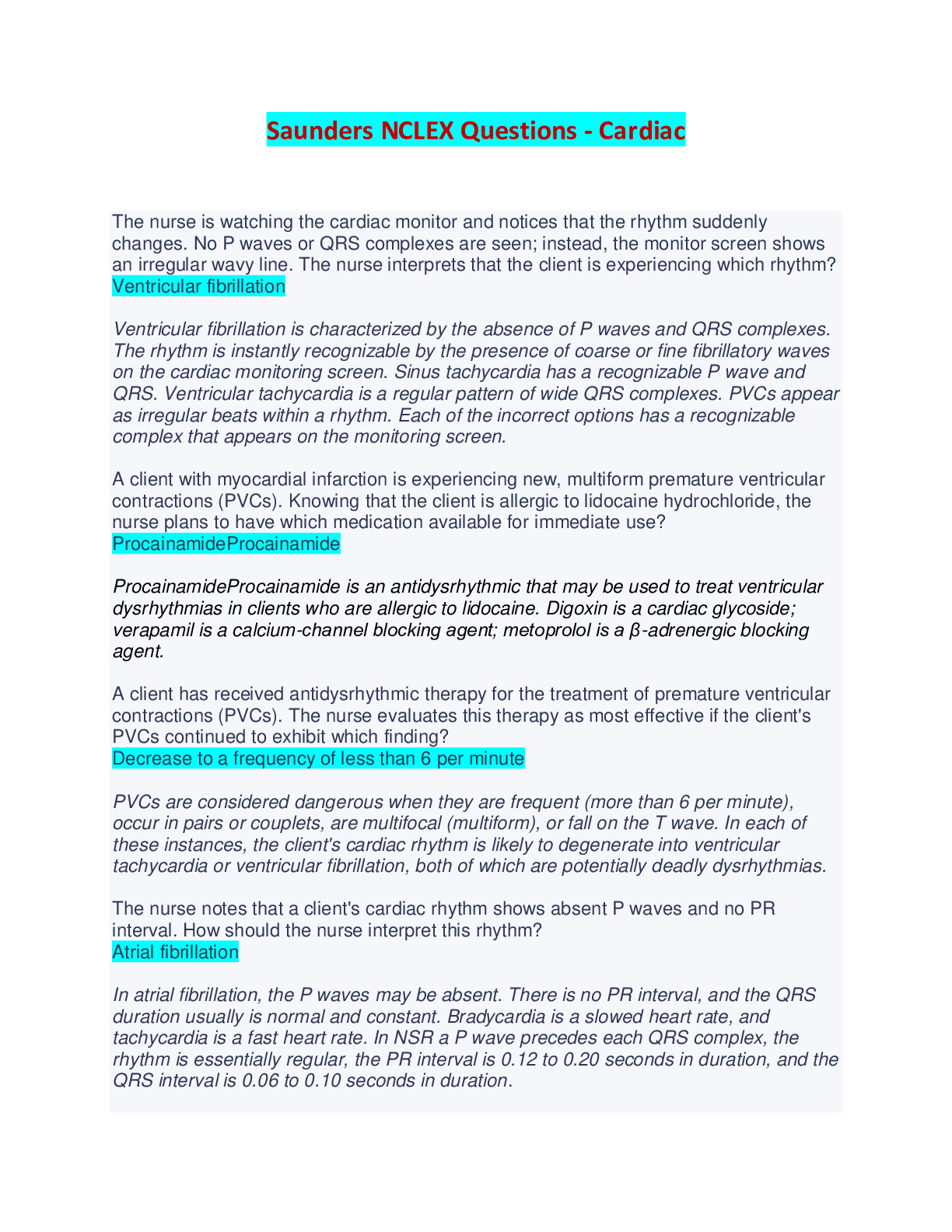
Buy this document to get the full access instantly
Instant Download Access after purchase
Buy NowInstant download
We Accept:

Reviews( 0 )
$15.00
Can't find what you want? Try our AI powered Search
Document information
Connected school, study & course
About the document
Uploaded On
Dec 16, 2023
Number of pages
7
Written in
Additional information
This document has been written for:
Uploaded
Dec 16, 2023
Downloads
0
Views
126


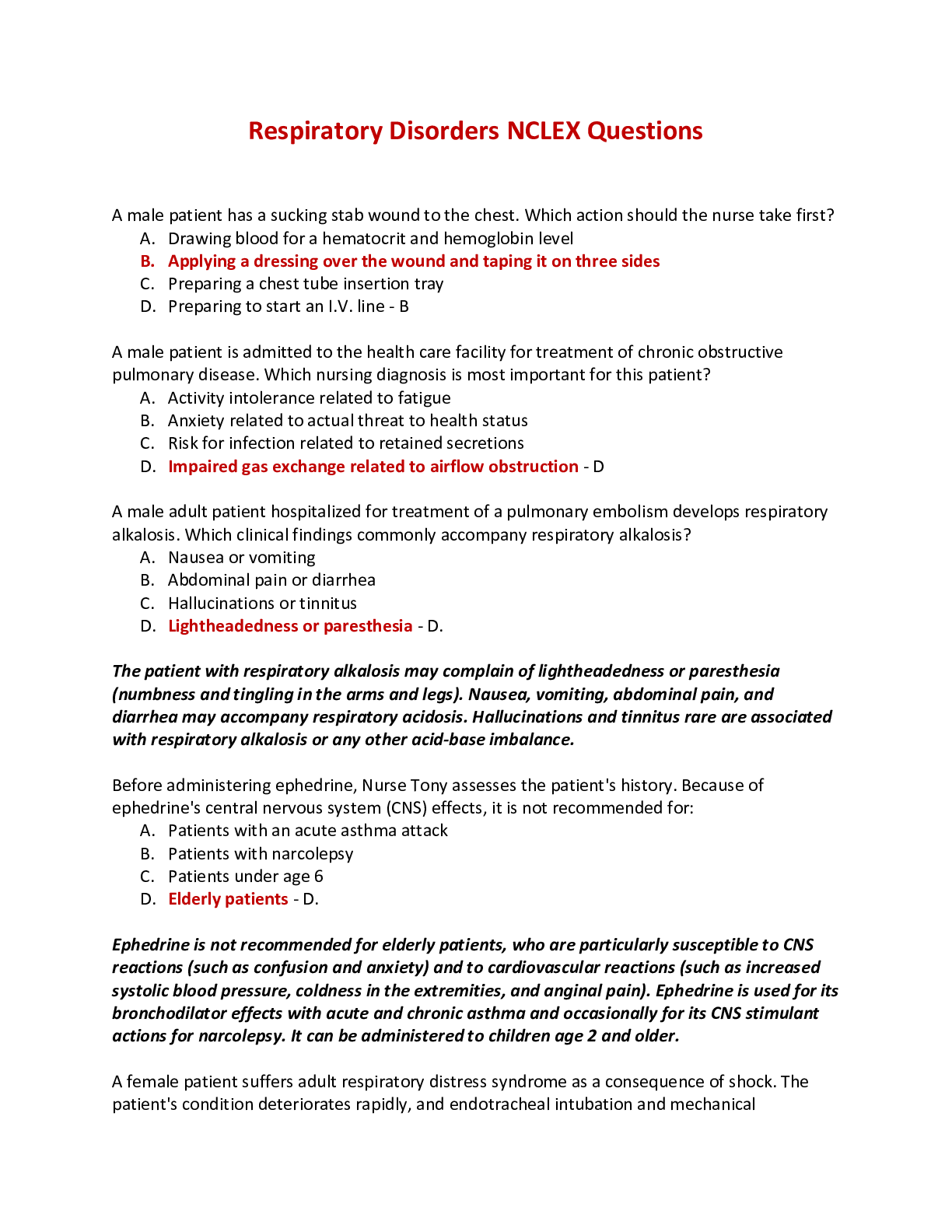
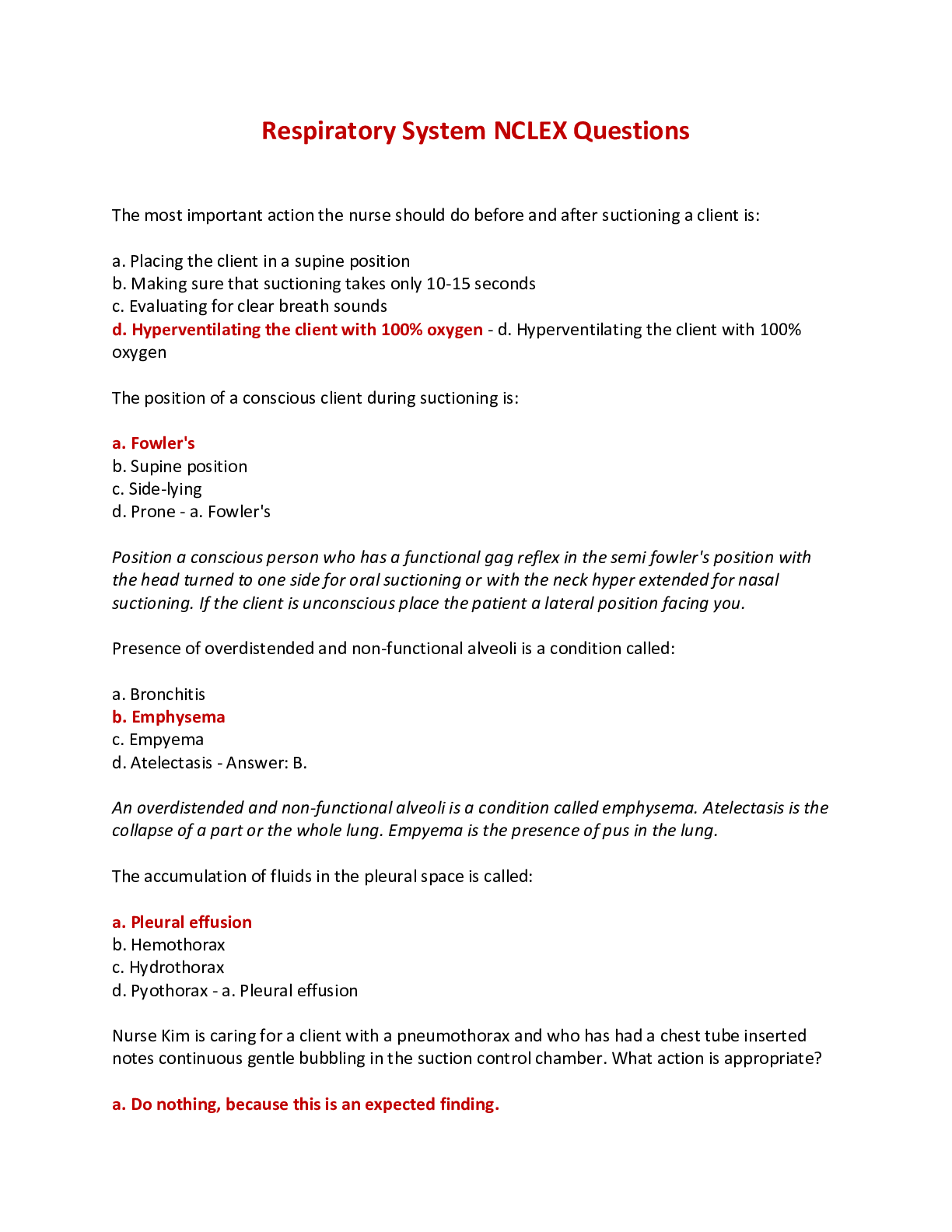
 NCLEX Study Guide.png)
